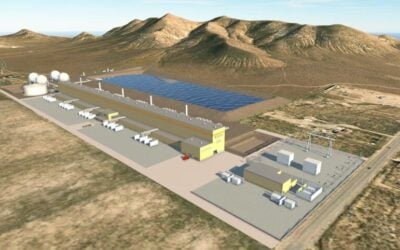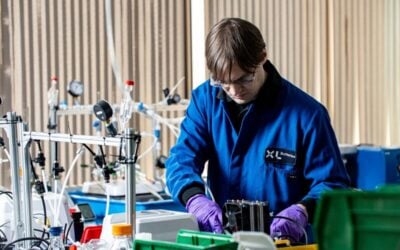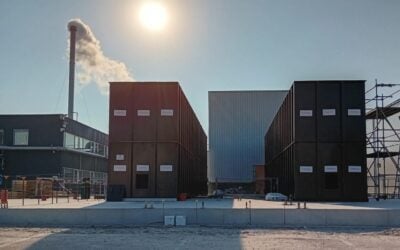
Eos, ESS Tech Inc and Energy Vault, the three big-name non-lithium energy storage firms that listed via SPAC deals, saw weak third quarter results compared to the same period last year.
ESS Tech Inc
Iron hybrid flow battery company ESS Tech Inc saw US$359,000 of revenue in the third quarter of 2024, down around 75% from the same period last year. Its adjusted EBITDA loss was US$18.9 million with a net loss of US$22.5 million, leaving it with cash and short-term investments of US$55.1 million.
The firm did see some good news in the quarter, with its Australian partner Energy Storage Industries – Asia Pacific (ESI) raising US$40 million from the Queensland government and private investors to continue building a facility where it will manufacture iron flow battery systems using ESS’ tech.
Energy Vault
It was a similarly low-revenue quarter for Energy Vault, the company known for its gravity-based long-duration energy storage (LDES) solution but which has since moved into battery energy storage system (BESS) integration.
Try Premium for just $1
- Full premium access for the first month at only $1
- Converts to an annual rate after 30 days unless cancelled
- Cancel anytime during the trial period
Premium Benefits
- Expert industry analysis and interviews
- Digital access to PV Tech Power journal
- Exclusive event discounts
Or get the full Premium subscription right away
Or continue reading this article for free
The firm saw revenue of US$1.2 million and adjusted operting expenses of US$15.2 million, with a negative adjusted EBITDA of US$14.7 million and a net loss of US$26.6 million.
Recent deals the company has completed include a ten-year offtake with an optimiser for a BESS project in ERCOT, Texas, which it owns and operates, and a 1GWh BESS order in Australia.
Eos Energy Enterprises
Zinc hybrid cathode battery firm Eos Energy Enterprises saw revenue of US$900,000, lower than expected, which the company attributed to “an acute supply chain delivery delay in receiving new Z3 inline enclosures from a key supplier”, with Z3 being its newest product. The figure is similar to its US$0.7 million in Q3 2023.
Cost of goods sold and other operating costs grew 21% and 65% to US$25.8 million and US$28.4 million respectively, and the company saw a net loss attributable to shareholders of a staggering US$342.9 million. The biggest driver of that was a “change in fair value of derivatives” on its balance sheet, of US$279.5 million.
The NYSE-listed firm is ramping up production and has scored some big orders recently, so will hope to see better days ahead. It has received a 216MWh order from City Utilities of Springfield, Missouri and independent power producer (IPP) International Electric Power is looking to build a 50MW/486MWh using its tech, as reported by Energy-Storage.news this week (Premium access), in a piece looking at its results in further detail.
Eos, which sells its batteries to system integrators, claims a commercial pipeline of US$14.2 billion. It is also close to securing a loan with the Department of Energy Loan Programs Office, at a time when some are speculating that officials are rushing to get clean energy deals over the line before Trump takes office. It expects it to finalise this loan by the end of 2024.





